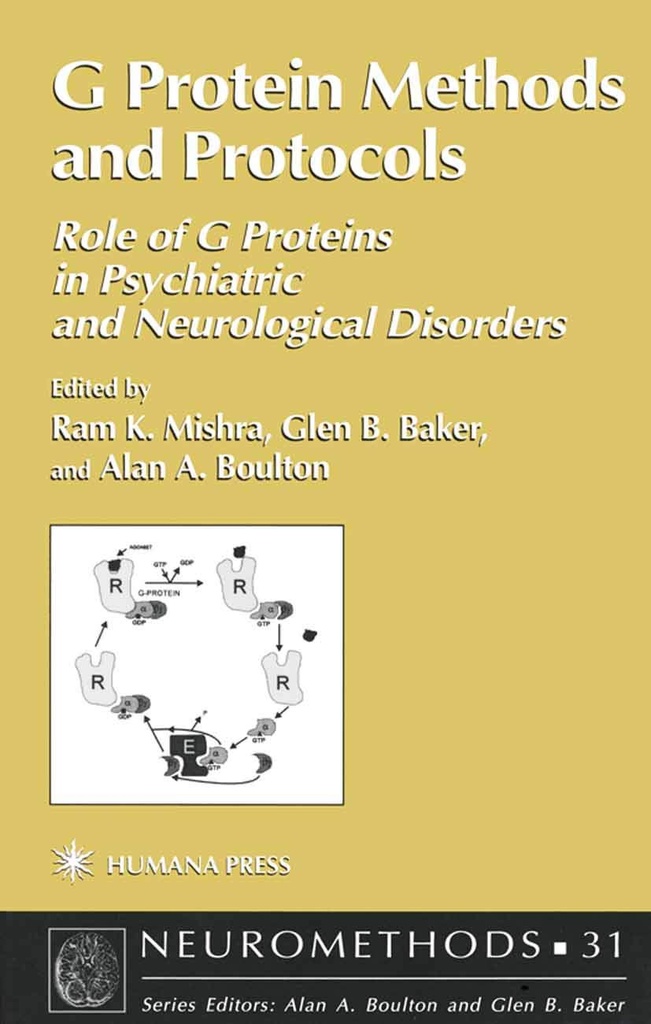G Protein Methods and Protocols: Role of G Proteins in Psychiatric and Neurological Disorders
Authors: Ram K. Mishra, Glen B. Baker, Alan A. Boulton Publisher: Humana Edition: 1 Publish Year: 1997 ISBN: 9780896034907 The G proteins are a family of structurally homologous, plasma membrane-associated guanine-nucleotide-binding proteins. These proteins play an integral role in the tra- duction of extracellular signals through second messenger systems. As such, G proteins affect a wide variety of intra cellular biochemical reactions by regulating the concent- tion of second messengers in cells. G proteins are heterotrimeric, consisting of a, p, and y polypeptide chains, with G protein specificity largely det- mined by the a-subunit, Molecular cloning of G protein s- units has revealed 23 distinct a-subunits, encoded by 17 different genes. Based on functional measures, G proteins are generally classified into three major categories: the G, family, which is stimulatory for adenylyl cyclase; the G, f- ily, which is inhibitory for adenylyl cyclase; and the G, f- ily, which stimulates phospholipases (Birnbaumer and Birnbaumer, 1995). Alternatively, on the basis of sequence homology, G proteins can be subdivided into four cate- ries: G,, G,, G,, and G12.
